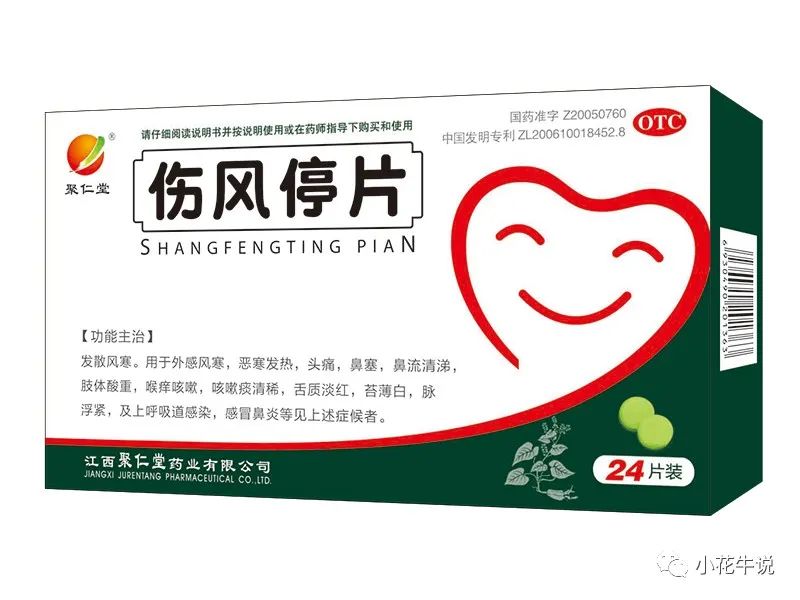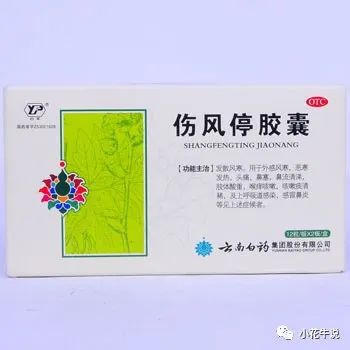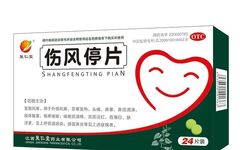The common cold is an external pathogenic disease caused by the invasion of external evils into the human body, clinically characterized by symptoms such as headache, nasal congestion, runny nose, sneezing, cough, chills, fever, and general malaise, commonly referred to as “wind-cold”. The typical duration of the illness is 3 to 7 days.
A cold caused by exposure to wind and cold is classified as a wind-cold common cold, also known as “shangfeng” or “catching a chill”. It is evident that air conditioning colds fall under this category. Symptoms include body aches, nasal congestion, runny nose, and cough with phlegm.

Since we have a cold, there are treatments for it. Today, I will discuss the treatment of cold symptoms with Shuangfengting.
In Traditional Chinese Medicine (TCM), diagnosis must be based on syndrome differentiation, and colds can be categorized into cold-heat and deficiency-excess patterns. Shuangfengting is primarily used for wind-cold common colds, especially when nasal congestion is present at the onset.
The symptoms of wind-cold common cold include chills and fever, with chills being more severe and fever mild, no sweating, headache and neck stiffness, nasal congestion with a heavy voice, occasional clear runny nose, or throat itchiness with cough, thin white phlegm, no thirst, or preference for warm drinks, and body aches; the tongue is pale with a thin white coating, and the pulse is floating and tight. Key diagnostic points include severe chills, mild fever, no sweating, nasal congestion, and clear runny nose.
Although the name Shuangfengting sounds like a Western medicine, it is indeed a genuine Chinese patent medicine.
Ingredients: Ma Huang (Ephedra), Cang Zhu (Atractylodes, fried), Jing Jie (Schizonepeta), Chen Pi (Dried Tangerine Peel), Bai Zhi (Angelica Dahurica), Gan Cao (Licorice)
The composition is clean and straightforward, with no unnecessary ingredients, each serving its purpose.
In the formula, Ma Huang is a pungent and warm herb that releases the exterior, opens the pores, promotes sweating to disperse wind-cold, and is the main ingredient with strong dispersing power.
Jing Jie and Bai Zhi assist in releasing the exterior and dispersing wind. Jing Jie helps Ma Huang in releasing the exterior and has strong wind-dispersing abilities, adapting to various combinations to exert its wind-dispersing effects, whether for wind-cold, wind-heat, or wind-damp conditions. Bai Zhi is a guiding herb for the Yangming channel, entering the nasal passages. Colds often lead to nasal congestion and runny nose, and Bai Zhi helps alleviate these symptoms. Besides colds, rhinitis can also present these issues, making Shuangfengting effective for wind-cold type rhinitis as well. TCM treatment focuses on mechanisms rather than just disease names; mastering this core technique makes you proficient in using Chinese medicine.
Assisted by Cang Zhu and Chen Pi to regulate Qi and strengthen the spleen, drying dampness to prevent external evils from affecting the spleen and stomach.
Gan Cao harmonizes the other herbs.
When combined, the herbs work together to disperse wind-cold, strengthen the spleen, dry dampness, and warm the nasal passages.
【Functions and Indications】Disperses wind-cold.
Indicated for external wind-cold invasion, with symptoms of chills and fever, headache, nasal congestion, clear runny nose, body aches, throat itchiness with cough, cough with thin and clear phlegm, red tongue, thin white coating, floating and tight pulse; also for upper respiratory infections, colds, and rhinitis presenting with the above symptoms.
This medicine is a pungent and warm exterior-releasing formula, and the addition of Chen Pi also has damp-drying and phlegm-transforming effects. The ability to transform phlegm is crucial for modern individuals; many diseases are related to phlegm-dampness. Regardless of the type of lung inflammation, it often results in lung shadows, known as “white lung”. What is that? Western medicine calls it an infection, but those shadows are just phlegm-dampness! “The spleen is the organ that generates phlegm, and the lungs are the organ that stores phlegm”; the root cause lies in overeating, leading to phlegm-dampness that the lungs must expel, which is truly unfortunate!

Key Diagnostic Points:
At the onset of a cold, with chills, headache, nasal congestion, clear runny nose, body aches, and thin clear phlegm, along with abdominal distension, pale tongue, and thin white coating.
Suitable for early-stage external wind-cold with internal dampness that has not transformed.
This medicine is suitable for external wind-cold with accompanying dampness, focusing on promoting sweating to release the exterior, opening the nasal passages, and also drying dampness, transforming phlegm, and regulating Qi to relieve pain. Compared to other Chinese patent medicines for treating wind-cold common colds, its effects on transforming dampness and regulating Qi are more pronounced, akin to adding a bit of Huo Xiang Zheng Qi to wind-cold common cold granules.
It is particularly effective for alleviating early-stage wind-cold common cold symptoms, such as nasal congestion, clear runny nose, and thin clear phlegm, along with chest and abdominal fullness and discomfort. It is best to use it promptly at the onset of a cold to prevent progression and reduce the duration of illness.

Applicable Diseases:
1.Early-stage wind-cold common cold with significant nasal congestion and clear runny nose, and abundant phlegm.
2.Rhinitis triggered by cold wind, with nasal congestion, clear runny nose, and abundant phlegm.
3.Air conditioning illness, with body aches.
Precautions for Use:
1.Use with caution in cases of exterior deficiency with spontaneous sweating, yin deficiency with night sweats, and deficiency asthma.
2.Contraindicated for wind-heat invasion.Manifested by significant fever, sweating, thirst, and sore throat with yellow phlegm.
3.Contains Ma Huang; prohibited for athletes.
4.Avoid smoking, alcohol, and spicy, cold, or greasy foods.
5.Do not take nourishing Chinese patent medicines simultaneously during treatment.
6.Patients with severe chronic diseases such as liver disease, diabetes, and kidney disease should take it under medical supervision.
7.Use with caution in patients with hypertension and heart disease.
8.If symptoms do not improve after three days of medication, or if symptoms worsen, or if new severe symptoms such as chest tightness or palpitations occur, discontinue use immediately and seek medical attention.
The common cold also has a course of illness, and the effectiveness is related to the timing of medication. When symptoms are mild at the onset of a cold, intervening early leads to quicker relief without sequelae. Sequelae are definitely due to inadequate treatment; if delayed, it may lead to cold evil penetrating deeper, transitioning from yang to yin, worsening the condition, making treatment more difficult.
Responding to the situation, Shuangfengting is suitable for early-stage wind-cold common colds with internal dampness and nasal symptoms; it works effectively!
The common cold is also a continuously changing process, and it is not just one medicine for the entire course. We must adjust the medication based on whether the external cold is severe, whether there is internal heat, or whether there is internal dampness, etc.
Follow along with Xiao Huaniu to choose Chinese patent medicines without getting lost!


